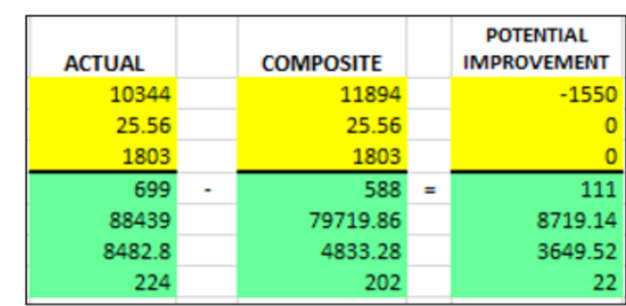


Indian Journal of Science and Technology
Year: 2020, Volume: 13, Issue: 38, Pages: 3970-3982
Original Article
Lou Ann T Acodile-Viado1,2, Rhoda A Namoco1*
1Department of Applied Mathematics, College of Science and Mathematics, University of Science and Technology of Southern Philippines, Lapasan, Cagayan de Oro, 9000, Philippines
2Mathematics Department, Bukidnon National High School, Malaybalay City, 8700, Philippines
*Corresponding Author
Email: [email protected]
Received Date:02 June 2020, Accepted Date:14 October 2020, Published Date:22 October 2020
Objectives: This study aims to evaluate the relative efficiency of select state universities and colleges (SUCs) in Southern Philippines using the inputoriented constant returns to scale (CRS) model and input-oriented variables returns to scale (VRS) model of data envelopment analysis (DEA). Methods: The input-oriented CRS and VRS model of the DEA is applied to analyze efficiency of selected state universities and colleges in Southern Philippines using four inputs (namely, Number of faculty members, personnel services and maintenance and other operating expenses (PS+MOOE), estimated cost per student, and tuition fee) and three outputs (namely, number of students enrolled, PRC rating, and number of graduates) as parameters. DEA works by comparing each decision-making unit (DMU) and classifies them as either efficient or less efficient. It also provides information on how these less efficient DMUs can be improved. Findings: Results of the study show how each unit perform when compared to other units. It showed that among the 26 SUCs considered in this study, only ten (10) SUCs are identified efficient and the remaining sixteen (16) SUCs are less efficient under the input-oriented CRS model. On the other hand, only thirteen (13) SUCs are identified efficient while the remaining thirteen (13) are less efficient under the input-oriented VRS model. These difference in the results from the two DEA models used may be due to the fact that CRS tends to lower the efficiency score while the VRS tends to raise the efficiency score. Application: DEA provides insights on how the less efficient SUCs can be improved by adopting the efficiency reference set (ERS) weights of the identified efficient SUCs against the less efficient SUCs in order to improve efficiency. In this way, results of this study provide insights on how the less efficient SUCs in Southern Mindanao can be helped for them to become efficient units.
Keywords: Efficiency; higher education; data envelopment analysis
© 2020 Acodile-Viado & Namoco.This is an open-access article distributed under the terms of the Creative Commons Attribution License, which permits unrestricted use, distribution, and reproduction in any medium, provided the original author and source are credited. Published By Indian Society for Education and Environment (iSee).
Subscribe now for latest articles and news.